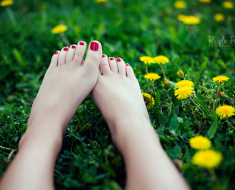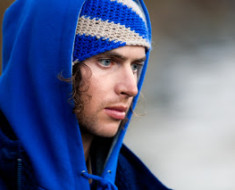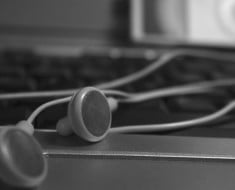
Thinking about runnining with Mininalist shoes?
It’s becoming quite apparent that the practice of minimalist running and minimalist footwear is not but a trend, and it’s not on the decline as many believe. No, I am constantly getting hits to the site with the search terms, “Vibram,” “Five Finger Shoes,” “Minimalist Footwear,” and the like. I am also receiving a lot of questions concerning my transition into the funky five-toed footwear that I currently sport. For those of you wondering, I no longer consider myself “in transition.” No, I am firmly planted in these wonderful shoes and plan to continue running in them until they prove themselves otherwise.
Trends in Barefoot & Minimalist Running

The Barefoot/Minimalist Movement appears to have started around 2010, picked up speed around February of 2011, dropped off in the middle of 2011, and never really regained traction again – that’s not until recently.
As you can see from the graph above, minimalist footwear is making a comeback once again. (Whew – it’s not just my imagination.) These trends are very interesting to follow.
Born to Run a great book on ancient running
I began to wonder why these trends were taking place; what was going on in the news and online forums during these peaks and valleys? What forces out in this great universe were steering the attention of millions of people? After doing some digging, I found some clues.

In 2009, Christopher McDougall took the running community by storm. In his best-selling book, Born to Run, McDougall tracks down members of the reclusive Tarahumara Indian tribe in the Mexican Copper Canyons. After being repeatedly injured as a runner himself, McDougall marvels at the tribe’s ability to run ultra distances (over 26.2 miles, commonly 100 miles or more) at incredible speeds, without getting the routine injuries of most American runners.
The book received attention in the sporting world for McDougall’s description of how he overcame injuries by modeling his running after the Tarahumara. He asserts that modern cushioned running shoes are a major cause of running injury, pointing to the thin sandals called huaraches worn by Tarahumara runners, and the explosion of running-related injuries since the introduction of modern running shoes in 1972.
In 2010, an article aptly titled, Almost Bare, appeared on “The Star Online.” In this article, they introduced the world to an entirely new trend, “Minimalist Running.” They proudly boast, “Say hello to minimal footwear — shoes that do away with frills like cushioning and motion control, yet mimic barefoot running, and come with protection and grip.”
Also in 2010, a Harvard study concerning barefoot running and injuries was published. Here is a summary of their findings:
Our research asked how and why humans can and did run comfortably without modern running shoes. We tested and confirmed what many people knew already: that most experienced, habitually barefoot runners tend to avoid landing on the heel and instead land with a forefoot or midfoot strike.
The bulk of our published research explores the collisional mechanics of different kinds of foot strikes. We show that most forefoot and some midfoot strikes (shod or barefoot) do not generate the sudden, large impact transients that occur when you heel strike (shod or barefoot). Consequently, runners who forefoot or midfoot strike do not need shoes with elevated cushioned heels to cope with these sudden, high transient forces that occur when you land on the ground.
Therefore, barefoot and minimally shod people can run easily on the hardest surfaces in the world without discomfort from landing. If impact transient forces contribute to some forms of injury, then this style of running (shod or barefoot) might have some benefits, but that hypothesis remains to be tested.
The decline of minimalist running
So what happened in August of 2011 to cause such a steep decline in the minimalist movement? Was it just another trend that faded into the backdrop as another fad emerged? Honestly, I’m not quite sure. There isn’t any clear evidence to support the theory of another shoe stealing the minimalist’s thunder. I have an idea though; I believe that people began to injure themselves by not transitioning properly.
To support this theory, I’ll point your attention to the letter “B” on the trend graph. At that point (February 2012), Vibram (the leaders in minimalist footwear) made an announcement. As reported by Reuters, “Vibram FiveFingers®, a pioneer in minimalist footwear, recently announced the launch of their new educational fitness resource portal.
The section of their website contains new and exciting educational tools and information for consumers looking to transition to barefoot fitness. It also has valuable information on how to start a new exercise regime, or enhance a pre-existing one, for 2012. As a leader in the barefoot running movement, Vibram is dedicated to educating its consumers on the best practices for the minimalist fitness revolution.”I believe that in 2012, people began to transition into the five-fingered shoes without injury.
They learned from the resources that were posted on Vibram’s website, and possibly from other runners who had transitioned properly. Everyone knows that word of mouth is (possibly) the best form of advertisement for any company, and Vibram wasn’t profiting from it at all before 2012. Who’s going to take running advice from someone limping around with their toes exposed? If you’ve read the article regarding my transition, you will recall that, I too, transitioned poorly. I went all out, without reading anything or asking for any advice. What’s sad is I knew about the material on the website.
Here’s My Point:
I encourage everyone that I speak with to read over the material (which I’ve linked to in the aforementioned article) and understand the changes that will be taking place during your transition. Get to know your feet, learn to appreciate all that they do for you, and for god’s sake, get them out of those casts that you call “running shoes.” We can encourage the growth of the minimalist movement through educating others on how to transition properly.
Lack of proper training is what may stop this running “trend” in its tracks for good. Everyone deserves to know how they can prevent injuries, free their feet, and lose the orthotics – Minimalist footwear can do that! Read this article on barefoot running to find out what you are missing out on.







I've been running in my Skechers gorun shoes a good bit to help with the transition into barefoot running. My Vibram five fingers will be coming today via mail, man I'm so excited. I downloaded the Barefoot running: step by step book and I can't wait to learn more about the form and correct landing techniques.
My wife got a pair of the Merrell road glove 2 minimalistic shoe, and loves them.
I'm glad you're not going straight from clunkers to minimalist. I transitioned down from a pair of New Balances, to Merell Road Gloves (which I love, too), then to VFFs. I went all out though when I got my Vibrams and ended up hurting pretty bad. I, then, did my research and transitioned properly. Doing your homework really helps. Let me know how you like the new shoes. You're gonna love em.
Yes, I have watched a good bit of barefoot running videos on youtube and read up on it a bit. I have been taking it slow. There is a well paved neighborhood nearby where I can practice in "truely" barefoot running (without shoes) running a block or two at a time. So far, I feel some soreness in my inner foots arch, which is why I'm thoroughly looking into the "landing" part, to see if I am doing it correctly. Is this kind of soreness normal, by building up my foots muscles? It's not too bad. where I can't walk of anything, I was still able to jog a couple miles today on my gyms treadmill (in my goruns).
Sounds like you're doing things exactly right. I ran completely barefoot a few weeks ago and was surprised at how much it was like running in my Vibrams; didn't hurt a bit. Of course, I have been doing it for a while now. Unless you have calluses all over your feet (I hope you don't, lol), you should expect pain for the first 10 – 20 runs. At least, that was my experience. I clearly remember training for the New River Marathon, hitting distances of 10-15 miles, and my feet felt bruised and sore before I was even finished. Today, I can run as far as my legs will take me without any pain.
There are many nerve endings in our feet, just like in our hands – they were both designed to provide feedback to the brain to let us know what move to make next. So, it takes time to allow these nerve endings to adjust to their reaction to the ground. When you think about it like that, it seems crazy that we've had our feet covered all this time, doesn't it? It's like we're telling the body that we don't want it to do what it was designed to do. We've really been cheating ourselves. I'm seriously looking around for a pair of minimalist casual shoes to wear out and about that are zero drop and have minimal sole.
That brings me to another point: Don't run in your Vibrams one day and a pair of clunkers the next. This confuses your body and throws off any progress you've made (IMO). I rarely wear anything (even out to dinner) other than either my Vibrams, flip-flops, or my Sperrys. I wouldn't wear a thick-soled pair of Nikes for anything now. I feel that it would be putting my feet back in the cast (figuratively).
http://www.patagonia.com/us/product/mens-advocate-lace-smooth?p=79048-0-155
http://www.patagonia.com/us/product/mens-advocate-stitch-vegan-shoe?p=78533-0-507
Check out these links above, I have the "stitch" version, and actually bought them on Amazon, they are vegan also 🙂 And I think Amazon might have more color options.
They are both minimalist shoes with zero drop. They are the lightest pair of shoes I have ever owned.